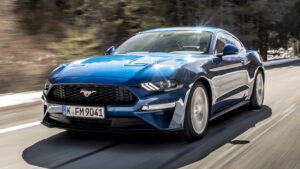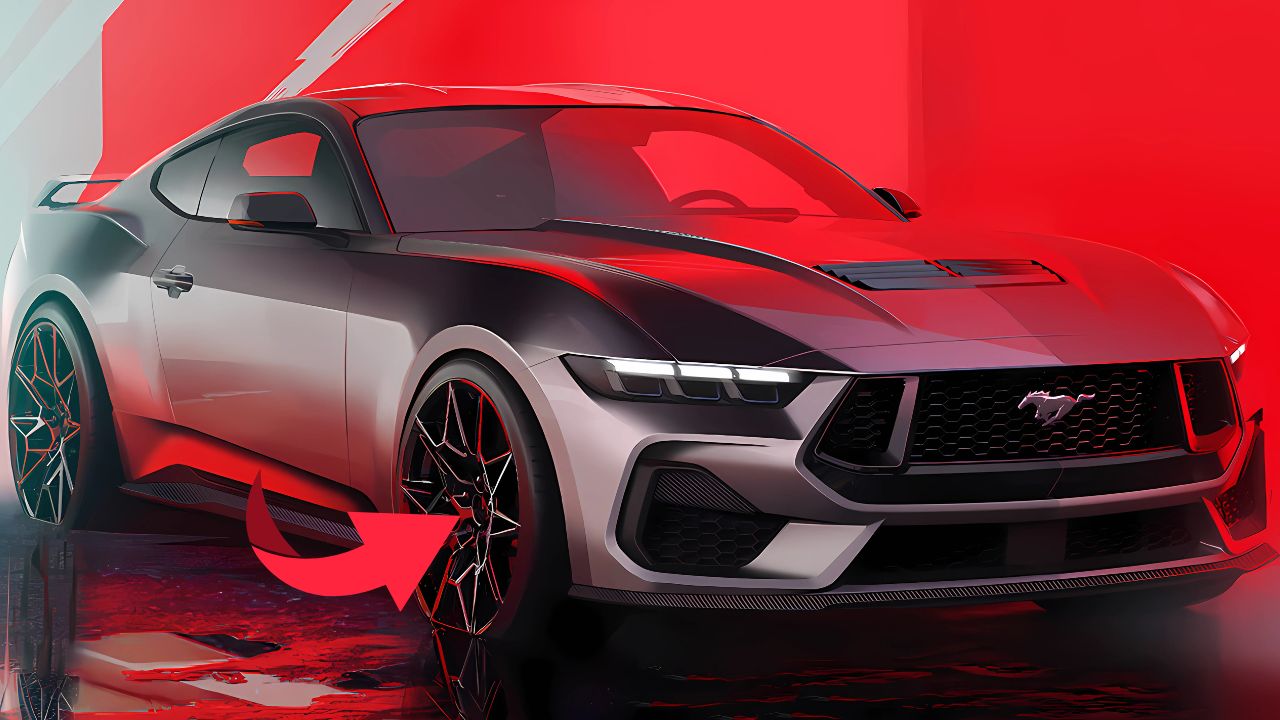The thunderous roar of V8 engines echoing across Australian dealerships tells a remarkable comeback story. After facing unprecedented challenges and near-extinction in the local market, the Ford Mustang has staged one of the most impressive automotive resurrections in recent memory, reclaiming its crown as Australia’s most beloved sports car with jaw-dropping sales figures that have left competitors scrambling in the dust.
The Numbers That Shocked the Industry
The Mustang coupe and convertible range posted 720 deliveries in May 2025, its best result since the current ‘S650’ generation was introduced in 2024, marking a spectacular turnaround that few industry experts saw coming. To put this achievement in perspective, this single month’s performance eclipsed the entire year-to-date sales figures of its closest competitors, leaving the BMW 2 Series Coupe trailing with just 422 units and the Subaru BRZ managing only 365 deliveries across the same period.
What makes these figures even more extraordinary is the broader context of the Mustang’s recent struggles. Yet the Mustang – Ford’s performance car hero among its SUV- and ute-dominated lineup – has already sold higher numbers year-to-date with 2489 sales in five months than it did in all of 2024, 2023, and 2021. Those lean years saw Ford Australia deliver merely 1,464, 1,475, and 1,887 Mustangs respectively, numbers that now seem almost laughably modest compared to the current surge.
From Near-Death Experience to Phenomenal Phoenix
The journey to this remarkable recovery reads like a Hollywood script filled with drama, setbacks, and ultimate triumph. The automotive world watched nervously as Ford contemplated completely withdrawing from the Australian market – a move that would have ended a legacy spanning decades of automotive excellence and innovation.
The challenges seemed insurmountable when production delays struck the seventh-generation Mustang like a thunderbolt. The Baltimore Bridge collapse in early 2024 created a logistical nightmare, blocking the primary shipping lane for Australia-bound Mustangs and pushing back the launch by a crushing six months. Instead of rolling off ships in January 2024 as originally planned, the first new-generation Mustangs didn’t begin their journey to Australian shores until July.
During this painful waiting period, competitors seized the opportunity with both hands. The BMW 2 Series claimed the sports car sales crown, while the Subaru BRZ added insult to injury by pushing the legendary Mustang down to an embarrassing third place. For a nameplate that had dominated Australian sports car sales for years, this temporary exile felt like an eternity.

The Price of Progress and Performance
Perhaps most remarkably, the Mustang’s renaissance has occurred despite significant price increases that would typically dampen consumer enthusiasm. The new generation commands substantially higher prices than its predecessor, with initial hikes of approximately $10,000 followed by additional increases ranging from $915 to $2,000 for the 2025 model year variants.
The Mustang now kicks off at $66,990 before on-road costs for the 2.3-litre turbocharged four-cylinder EcoBoost coupe with 10-speed automatic, representing a significant investment for Australian sports car enthusiasts. The V8-powered GT variants command even higher prices, with the manual version starting at $78,990 and the automatic climbing to $81,990. The range-topping convertible pushes the price envelope further to $87,990.
Yet rather than deterring buyers, these premium prices seem to have enhanced the Mustang’s desirability, creating an almost luxury positioning that differentiates it from more affordable sports car alternatives. This pricing strategy appears to be working brilliantly, with customers willingly paying substantial premiums for the authentic American muscle car experience.
The Magnificent Model Lineup That Captured Hearts
EcoBoost: The Efficient Performer
The entry-level EcoBoost variant has proven that downsizing doesn’t mean compromising on excitement. Its turbocharged 2.3-liter four-cylinder engine delivers impressive performance while maintaining relative fuel efficiency – a crucial consideration for daily-driving Australian enthusiasts. The EcoBoost demonstrates Ford’s engineering prowess in extracting substantial power from smaller displacement engines.
GT: The Sweet Spot of Performance
This review relates to the 2025 Ford Mustang GT Coupe ($78,990 plus on-road costs for the manual and $81,990 plus on-road costs for the automatic), and it’s this variant that has captured the imagination of Australian buyers. The GT’s naturally aspirated 5.0-liter V8 produces an intoxicating combination of power, sound, and character that modern turbocharged alternatives struggle to match. Available in both coupe and convertible configurations, the GT caters to different lifestyle preferences while maintaining that essential Mustang DNA.
The availability of both manual and automatic transmissions has been crucial to the GT’s success. Purists can still enjoy the engaging three-pedal experience, while those preferring convenience can opt for the sophisticated 10-speed automatic that delivers both performance and efficiency.
Dark Horse: The Sold-Out Sensation
At the pinnacle of the range sits the Dark Horse, the most powerful factory-produced Mustang in Australian history. The Dark Horse phenomenon illustrates the incredible pent-up demand for high-performance American machinery in Australia. All Dark Horses have found a stable. This webpage is for information only as all Mustang Dark Horse stock is currently reserved for customers, demonstrating that even at premium pricing, Australian enthusiasts are willing to invest substantially in authentic performance experiences.
Technical Excellence Meets Emotional Appeal
Engineering Achievements
Modern Mustangs represent significant technological advancement over their predecessors. It’s awesome that Ford has fitted six-piston front brakes and four-piston rear brakes as standard on new-generation Mustangs sold in Australia, providing the stopping power necessary to match the increased performance capabilities. The available MagneRide adaptive suspension system further enhances the dynamic experience, though some enthusiasts argue it should be standard equipment across the range.
The integration of advanced driver assistance systems, comprehensive infotainment technology, and modern safety features ensures that contemporary Mustangs deliver both excitement and responsibility. Features like autonomous emergency braking, radar cruise control, and blind-zone warning systems provide peace of mind for daily use.
The Sensory Experience
What sets the Mustang apart from electric alternatives isn’t just performance metrics but the complete sensory experience. The V8 sound remains an irreplaceable element that connects drivers emotionally to their vehicles in ways that silent electric motors simply cannot replicate. This emotional connection explains why Mustang sales continue growing even as the automotive industry pivots toward electrification.
Historical Context and Future Trajectory
Learning from Past Peaks
It was also the Mustang’s best result since November 2018 when 780 were delivered, its best month of that year when a total of 6412 were delivered. While impressive, current figures still pale compared to the Mustang’s historical peak in Australia. The absolute zenith occurred in May 2017, when an astounding 1,351 Mustangs found new homes, making it second only to the Ford Ranger in the company’s local lineup. That year’s annual total of 9,165 units represents the gold standard for Mustang sales Down Under.
Sustainable Growth Projections
With a current monthly average of 498 vehicles, the 2025 Mustang appears poised to surpass its 2021 and 2020 annual results of 2,827 and 2,923 units respectively by June 2025. This trajectory suggests sustainable growth rather than a temporary spike, indicating that Ford has successfully repositioned the Mustang for long-term success in the Australian market.
Market Dynamics and Competitive Landscape
The Mustang’s resurgence occurs against a backdrop of significant changes in the sports car segment. The discontinuation of the Chevrolet Camaro and Dodge Challenger in global markets has effectively left the Mustang as the last traditional American muscle car standing, potentially increasing its appeal among enthusiasts seeking authentic experiences.
Meanwhile, the growing success of electric alternatives like the Mustang Mach-E in other markets demonstrates Ford’s ability to diversify its performance portfolio while maintaining the traditional Mustang’s unique position.
Frequently Asked Questions
Q: What factors contributed to the Ford Mustang’s dramatic sales recovery in Australia?
The recovery stems from multiple factors including the arrival of the highly anticipated seventh-generation model, improved supply following production delays, strong pent-up demand from the waiting period, and the Mustang’s unique position as the sole remaining traditional American muscle car in the market.
Q: How do current Mustang sales compare to its historical performance in Australia?
While current sales show remarkable improvement with 2,489 units in just five months of 2025, they remain below historical peaks. The best-ever year was 2017 with 9,165 sales, and the current trajectory suggests 2025 could reach approximately 6,000 units annually.
Q: Why are customers willing to pay significantly higher prices for the new Mustang?
The premium pricing reflects substantial improvements in technology, safety, performance, and build quality compared to previous generations. The higher prices also create exclusivity appeal, while the lack of direct competitors in the traditional muscle car segment reduces price sensitivity among target customers.
The Road Ahead: Sustaining the Momentum
The Ford Mustang’s spectacular sales revival in Australia represents more than mere numbers – it symbolizes the enduring appeal of traditional automotive experiences in an increasingly digital world. As the automotive landscape continues evolving toward electrification and automation, the Mustang’s success demonstrates that there remains substantial market demand for vehicles that prioritize emotional engagement alongside practical transportation.
Ford’s challenge now lies in sustaining this momentum while managing supply chain complexities and evolving market demands. The company must balance accessibility with exclusivity, tradition with innovation, and performance with responsibility. Based on current trends, the Mustang appears well-positioned to maintain its recovered status as Australia’s premier sports car choice.
The thunderous return of the Ford Mustang to Australian sales leadership proves that reports of the muscle car’s death have been greatly exaggerated. Instead, this magnificent machine continues evolving, adapting, and thrilling new generations of enthusiasts while honoring the legacy that made it legendary. In a world increasingly dominated by anonymous transportation appliances, the Mustang’s success reminds us that some experiences simply cannot be replicated – they must be felt, heard, and lived.
